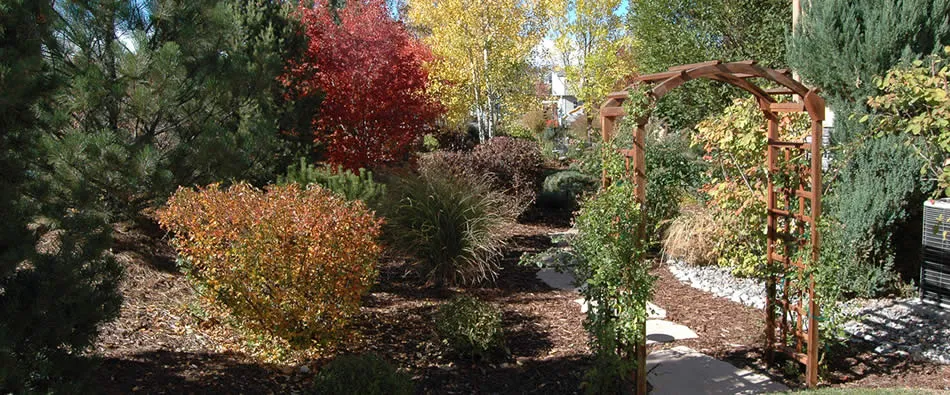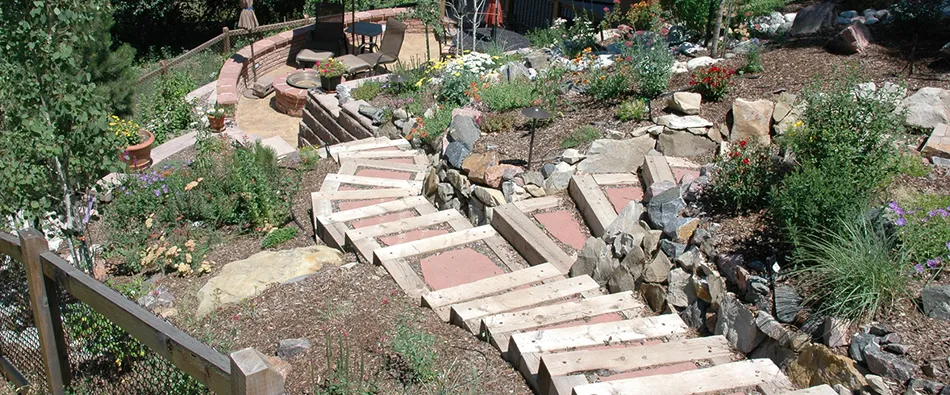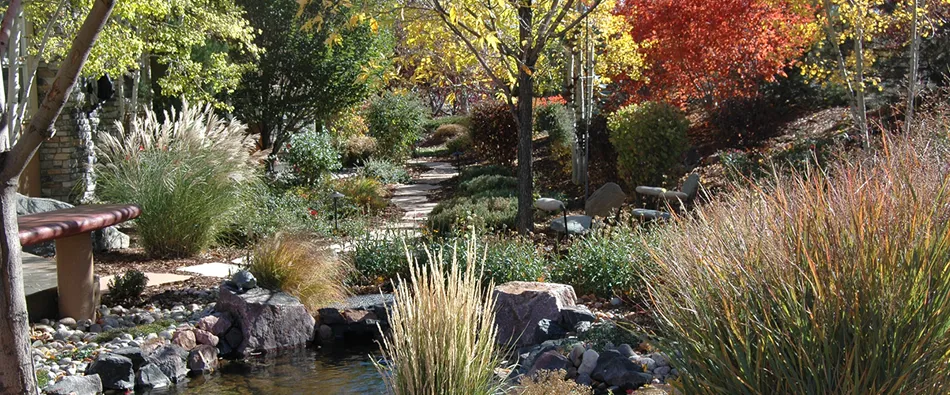Lawns take a lot of flak for their consumption of water but the truth is that most lawns are grossly overwatered and it is possible to bring a lawn through a drought and even grow a lawn during dry, drought stricken conditions. Weaning a lawn off of its water habit is the first step, this contributes to a deeper root system and a healthier plant which is more tolerant to adverse conditions. Selecting drought tolerant grasses and avoiding further stresses on a drought stricken lawn further the effort of getting through periods of water scarcity.
The Basics of Watering the Lawn - It all starts with the basics. Most lawns are over-watered to begin with so learning how to properly water a lawn will go a long way towards supporting it during times of drought or water restrictions. An often overlooked fact is that people are responsible for the water use on lawns, not the lawns themselves. Even water loving grass species like Kentucky bluegrass are capable of surviving and thriving with much less water than they are normally accustomed to.
Nurturing a healthy lawn that can deal with the ups and downs of a growing season is not that difficult. Consider these habits a starting point for a comprehensive lawn care program that is easy and won't eat up all your time and money.
Mow high- Mowing the grass too short weakens the plant. It can harm the crown of the plant where growth takes place and creates a vector for weeds to infiltrate. Mow as high as possible to store moisture and carbohydrate reserves so it is better able to survive periods of drought, disease conditions, and other stresses. Keeping a longer lawn (3 1/2")allows for maximum photosynthesis and will encourage the grass to overcrowd weeds.
Practice IPM- Integrated Pest Management (IPM) is just a fancy term for using some common sense. Have realistic expectations for your lawn’s appearance, avoid conditions that attract weeds and pests, and monitor for their presence so an outbreak isn’t a surprise. Use appropriate controls only if necessary with chemical pesticides being a last resort or use organic weed controls.
Simply put, compost is decomposed organic matter but that doesn't explain much. To a romantic, compost is the very essence of life. The living aspect of the soil responsible for a myriad of the most sublime and complex processes known to man. Organisms nourishing organisms all the way up the food chain from simple bacterium to crops to humans, none of it possible without decomposed organic matter - compost. Too romantic? Essentially, compost is decomposed organic matter often used as a soil amendment to add organic matter and beneficial organisms to the soil. It is the stuff of life, teeming with microorganisms that become part of the nutrient cycle of plants.
How is compost made?
Compost can be made small scale; in a backyard or underneath a sink, or large scale; in giant windrows turned by front end loaders or other specialized equipment. Either way, it is all about decomposing organic matter until all that is left is a rich, dark, musty, almost sweet smelling substance with the consistency of potting soil.
Almost any organic substance can be turned into compost, some of the more common items used to make compost are kitchen scraps, leaves, and grass clippings. Hay, straw, fish gurry, animal manure, twigs, tree bark, and sea shells are often used to make up the composition of compost.
The compost is usually mixed two parts dry material (bark, leaves) to one part wet or green material (grass clippings, fish gurry) and left in either containers, piles or windrows to decompose. Air movement is important so large piles are turned occasionally and containers are usually open to the air in some manner. Decomposing compost should remain evenly moist but not wet. Depending on the type of composting system, it can take anywhere from a few months to a year or more to finish the process, sometimes referred to as cooking.
Actively decaying compost is said to be cooking because temperatures can reach anywhere from 120-160 degrees Fahrenheit. In fact, compost is not considered properly cooked unless it has reached these high temperatures long enough to sterilize weed seeds and eliminate harmful bacteria found in some manures. The heat is generated from the intense metabolic activity of bacteria and fungi feasting on the raw organic matter. Eventually, more complex organisms like amoeba and nematodes consume the simpler bacteria and fungi, the pile begins cooling while the nutrients in the compost become more and more concentrated from their waste products and further decomposition. The compost becomes stable as the biological activity reaches a normalized state but the compost is still curing until it finally becomes mature compost. Compost that is not completely finished can have an ammonia odor to it and may not deliver the desired effects or it can even harm the plants as it continues to cook.
Why is compost so good?
It's the microorganisms in compost that give it it's magic. Millions of microbes go to work in the soil, cycling nutrients and making them available to be taken up by the plant. When married with the soil, compost essentially becomes natural fertilizer. Compost is also loaded with micronutrients and other complex biology that is extremely beneficial for plant growth. Compost adds life to the food web, ultimately resulting in healthier grass.
Good quality compost contains a high percentage of finished organic matter with the rest being made up by smaller unfinished organic matter like wood chips, saw dust, seas shells and mulched leaf matter. The presence of organic matter that is not fully composted is fine and it will eventually break down in the soil, but when it is used strictly as a bulking agent the compost begins to lose it's value as a soil amendment.
How is compost applied to a lawn?
Compost can be spread manually with shovels by using a throwing action to try and achieve a layer about 1/4" thick. It can be smoothed out with a rake to blend it in a little better and after several days it will not even be noticeable on the surface of the lawn. Topdressing machines are becoming more widely available as composting becomes more popular as a lawn care activity, ideal for larger lawns and most likely provided as a service from lawn care companies specializing in organic lawn care.
Applying the compost immediately after seeding and aerating is an excellent way to incorporate the compost directly into the soil and provide a jump start for seedlings. Just doing this once or twice a year will benefit the lawn more than many quick-fix products that are convenient but not always the best choice.
Because nutrients are always cycling, microorganisms are continually reproducing and dying, you can never really add too much compost. Ideally, a lawn would be topdressed with compost several times a year but a composting program will ultimately be dictated by time and money. The target for a composting program should for a lawn's soil to contain 5% organic matter. It seems like a small amount but it can take years to build up in certain soils. Have your soil tested to determine the amount of organic matter present.
Once organic matter starts to build up in the soil, topdressing can be cut back to once or twice a year. Also, the need to fertilize and water the lawn will begin to decline as the soil begins to provide optimal growing conditions for turf. Weed, insect and disease pressure will decrease as well, resulting in cost savings over the long term as the work of the healthy soil replaces the life support system of synthetic fertilizers and chemical pesticides.
Denver, Colorado






